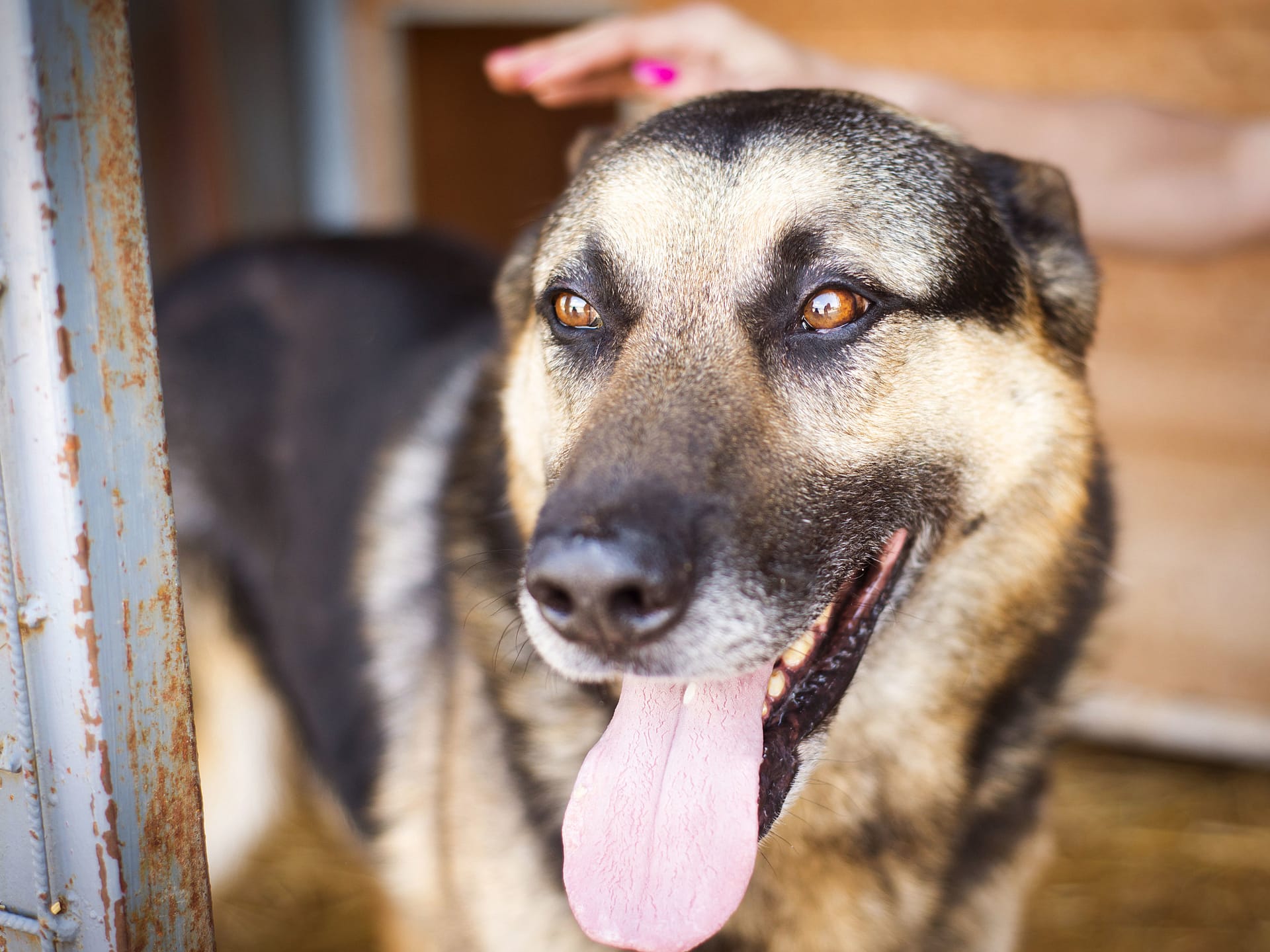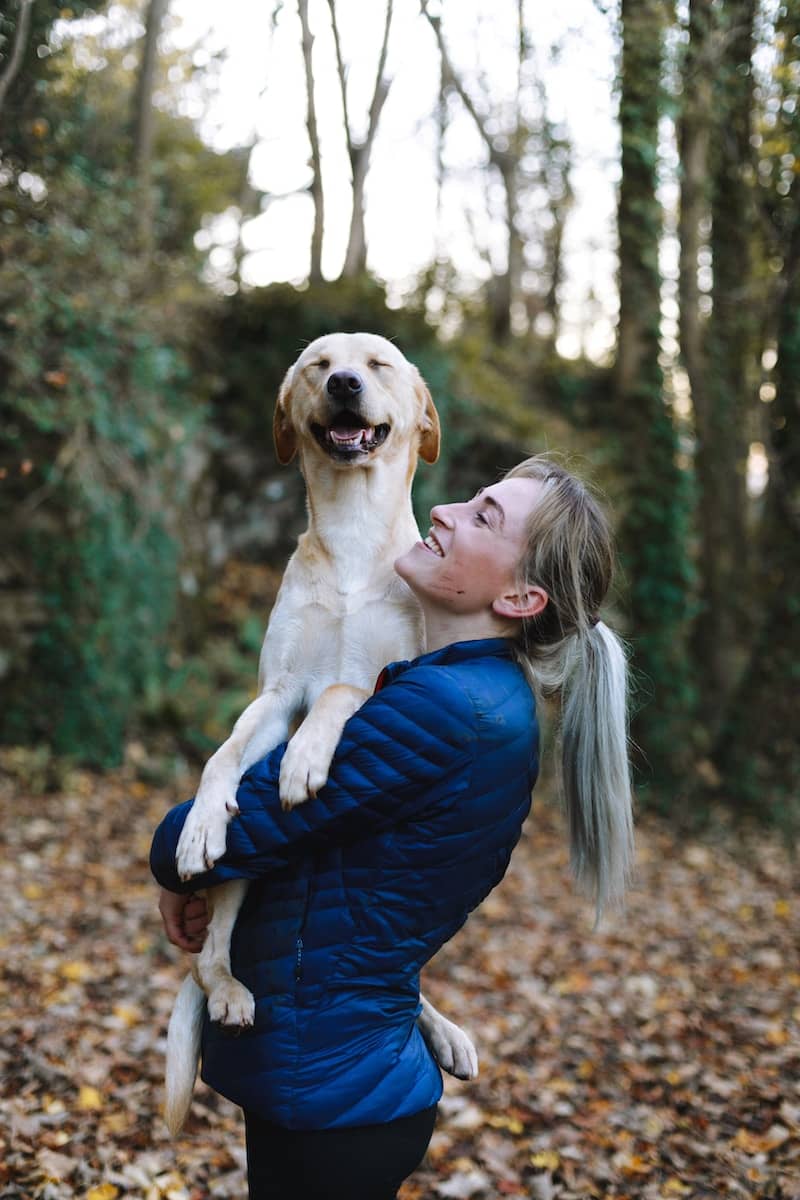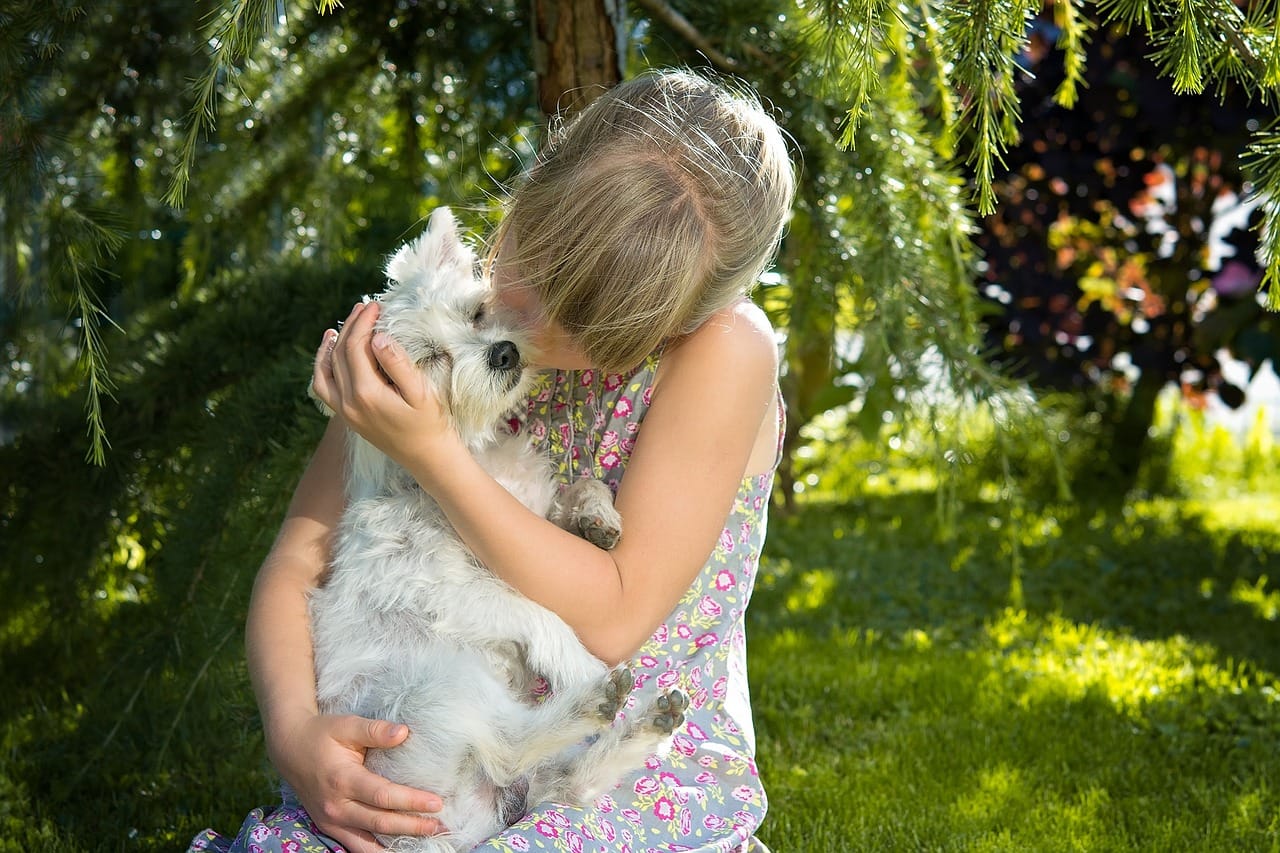This post is also available in:
Français (French)
Español (Spanish)
No-kill shelters are an increasingly popular animal welfare option.
They provide a safe and loving environment for homeless animals, allowing them to remain in the shelter until they find their forever home.
But what exactly is a no-kill shelter?
In this article, we’ll explore what makes these facilities different from traditional animal shelters and why more people are choosing to adopt them.
No-kill shelters often have varying definitions depending on where you’re looking; however, generally speaking, it means that any healthy or treatable animals taken into the facility will never be euthanized due to lack of space or resources. Animals can stay at the shelter as long as necessary while waiting for adoption or transfer to another rescue organization.
This helps save innocent lives and allows greater flexibility when finding homes for pets in need.
What Is A No-Kill Shelter?
No-kill shelters are a safe haven for homeless pets, providing them with food and medical care until they can find their forever homes. Every year, thousands of animals enter these facilities in search of a new life and family to love them. It is through no-kill shelters that many of these voiceless creatures have been given a second chance at happiness—but it doesn’t come without its challenges.
The number of cats and dogs entering no-kill shelters has risen tremendously in recent years; this means more work needs to be done by volunteers and staff members alike. A key factor behind the overcrowding of animal shelters is the lack of spay/neuter programs available in many communities.

Traps are set up along city streets or neighborhoods where stray cats commonly gather, then taken to get neutered before being released back into the wild. Trap/neuter programs facilitate the reduction of pet overpopulation while also helping reduce euthanasia rates nationwide — an effort that would not be possible without support from local organizations and individuals who volunteer their time and resources towards these initiatives.
It takes a village to make any kind of meaningful change for our homeless animal population — but together we can create a real, lasting impact on our furry friends’ lives. We must continue working together as one united community if we want to see fewer strays out there on the streets, so let’s join forces now!
Benefits Of Adopting From A No-Kill Shelter
Having a better understanding of what no-kill shelters are, one may now consider why adopting a no-kill shelter is beneficial.
Having a better understanding of what no-kill shelters are, one may now consider why adopting a no-kill shelter is beneficial.
To begin with, rescuing an animal from a no-kill shelter helps to ensure that the pet’s rights are being respected and protected; they aren’t just treated like discarded objects or disposable property.
Secondly, most no-kill shelters will require spaying/neutering prior to adoption in order to reduce overpopulation problems and provide animals with proper medical care.
Here are four notable benefits of adopting from a no-kill shelter:
- The rescued animal has already been evaluated for temperament and personality traits before adoption.
- Most no-kill shelters have trained volunteers who can help guide prospective owners through the process of selecting the right pet for their lifestyle and family needs.
- Adopting a no-kill shelter gives pets a second chance at life by providing them with loving homes instead of euthanasia due to overcrowding in other facilities.
- Access to low-cost spay/neuter services as well as basic veterinary care is often available at these types of organizations.
In addition to all these advantages, it’s also important to note that when people adopt an animal from a no-kill shelter, they help support many local rescue efforts while simultaneously freeing up resources so more deserving animals can be saved later on down the road.
Ultimately, this type of arrangement proves rewarding both emotionally and financially – not only is there satisfaction gained knowing you’ve provided some much-needed love and attention but it’s also significantly less expensive than buying an animal outright from a breeder or pet store!
What Types Of Animals Are Commonly Found In No-Kill Shelters?
No-kill shelters are designed to provide humane treatment and care for animals in need of a safe, loving home. These types of animal welfare organizations have become increasingly popular with people seeking to adopt cats, dogs, and other pets who would otherwise be left out on the streets or euthanized due to overcrowding in traditional shelters.
Most no-kill shelters house cats and dogs as their primary occupants, but many also take in rabbits, guinea pigs, birds, reptiles, and farm animals such as goats, sheep, and chickens. The most common type of pet found in no-kill shelters is cats; however, depending upon the location and size of the shelter there can be quite a variety available.

The goal of a no-kill shelter is to give every animal an opportunity at finding its forever home. They strive to keep all animals healthy through regular vet visits, vaccinations, and spaying/neutering services so that they can eventually find a loving family where they will thrive.
Additionally, these facilities often offer behavioral training classes which increase the probability that each rescue will be successfully adopted into permanent homes.
Challenges Of Running A No-Kill Shelter
No-kill shelters provide a safe, loving environment for animals who have been abandoned or otherwise displaced.
While many of these organizations are small and privately funded, they still face a variety of challenges in order to ensure the safety and well-being of their wards.
One common challenge is finding reliable sources of funding. Most no-kill organizations rely on donations from private citizens as well as grants, so it can be difficult to maintain consistent financial support over time. Additionally, no-kill shelters must often cover costs associated with spay/neuter programs if they want to reduce overcrowding and help more animals.
Another major hurdle facing no-kill shelters is providing adequate medical care for their charges. Many of the animals that end up in these facilities come from abusive homes or situations where they were not given proper veterinary attention. As such, some may require expensive operations or treatments that simply cannot be covered by donations alone.

To address this problem, many no-kill shelters partner with local clinics or animal hospitals to ensure their residents receive the best possible care at an affordable price.
Overall, running a successful no-kill shelter requires dedication, hard work, and creative problem-solving skills in order to address any issues related to finances and medical attention. With enough passion and persistence, however, anyone can make a positive difference in the lives of homeless animals everywhere!
How To Support No-Kill Shelters
No-kill shelters are an integral part of the effort to reduce animal homelessness and euthanasia.
Supporting these organizations can have a massive impact on the lives of animals in need. Here are just some ways you can help:
- Financial Support – Donating money is one of the best ways to support no-kill shelters, as it helps them cover costs for necessary items such as food or veterinary care. You may also want to consider donating supplies such as towels, blankets, toys, or pet food that they need every day.
- Volunteering – Volunteering at a no-kill shelter gives you an opportunity to directly interact with animals and make their lives better by providing love and attention. This could include walking dogs, cleaning cages, assisting with adoptions, helping out during special events, and more!
- Spay/Neuter Programs – Many communities offer spay/neuter programs to prevent unwanted litters from being born in the first place. By taking advantage of these services when possible, you’re not only doing your part but also helping local shelters reduce overcrowding and strain on resources.
In addition to this list, there are many other ways you can contribute – from fostering pets to spreading awareness about animal adoption! Every little bit counts toward making sure all homeless animals find loving homes where they deserve to be!
What Are The Adoption Processes For No-Kill Shelters?
Adopting a pet from a no-kill shelter is often an incredibly rewarding experience for both the animal and its new family. The adoption process at these shelters typically involves several steps to ensure that the animal will be going to a suitable home with people who can properly care for them. Animal care is paramount in any successful adoption story, so here’s what you need to know about adopting from a no-kill shelter.
First of all, potential adopters must fill out an application form detailing personal information as well as lifestyle factors that could affect how they would take care of their pet. This also helps the shelter staff determine if the applicant is fit to adopt or not. Once the form has been filled out, it’s sent off to the shelter workers for review; depending on the particular organization, this step may take anywhere from 24 hours up to two weeks.

The next part of the adoption process usually involves bringing your prospective furry friend home with you! Most shelters require any existing pets in your household to meet the new addition first—this ensures that everyone gets along before finalizing the adoption agreement. If all goes according to plan, then you’ll get to sign some paperwork and provide payment (if applicable) after which point your pet becomes officially yours!
No-kill shelters are dedicated to finding loving homes for animals and ensuring their long-term well-being — something reflected in their thorough adoption processes. Every year countless success stories emerge due to these shelters’ hard work, making sure each four-legged resident finds them forever home.
What Are Some Common Myths About No-Kill Shelters?
The adoption process for no-kill shelters is a crucial part of the ethical standards they must uphold. The process can be lengthy and rigorous, but it’s all in service to finding loving homes for animals who may have been dealt an unfortunate hand.
However, there are several myths that surround these types of animal rescue organizations. For instance, some people believe that no-kill shelters take on more animals than they can handle or care for properly due to limited resources, causing harm to them in the long run. On the contrary, many no-kill shelters work hard to ensure their financial sustainability so as not to overextend themselves and endanger any of the animals under their care.
No-kill shelters also sometimes get wrongly accused of being unsupportive towards local humane societies which euthanize pets when necessary; this could not be further from the truth. In reality, most of these organizations strive to create meaningful partnerships with other animal welfare groups to ensure proper treatment and safety for homeless pets wherever possible.
For instance, some people believe that no-kill shelters take on more animals than they can handle or care for properly due to limited resources, causing harm to them in the long run.
How Can I Find A No-Kill Shelter Near Me?

Finding a no-kill shelter near you can be an important step in helping animals find safe and loving homes. Before you start your search, it’s important to understand what a no-kill shelter is, and how they differ from other shelters.
A no-kill shelter is one that meets certain humane standards, including never euthanizing healthy or treatable animals due to space limitations or lack of resources.
When looking for a no-kill shelter in your area, the first place to check is your local animal control department as they may offer more information on available options. You can also look up local rescue organizations online; many websites list all registered non-profit animal rescues in the area.
It’s essential to read up on the organization’s mission statement before providing financial support – some will only provide adoption services while others may assist with medical care too.
It’s worth noting that there are limited resources available at most no-kill shelters so don’t expect them to take every pet surrendered to their facility. Finding a reliable source of funding is key for these facilities as this allows them to bring more animals into their care and gives them the best chance at finding forever homes.
Consider donating time or money if you’re able to do so; even small contributions can have a huge impact on improving animal welfare in your community!
What Are The Costs Of Adopting From A No-Kill Shelter?
The search for a no-kill shelter has come to an end, but the journey is just beginning.
The search for a no-kill shelter has come to an end, but the journey is just beginning.
With the cost savings and potential for the unconditional love that comes with adoption from a no-kill shelter in hand, it’s time to prepare for what lies ahead.
From fees associated with adoption itself to the ongoing costs of caring for an animal companion, understanding what awaits can help prospective adopters make the best decision possible.
Finding a no-kill shelter is often only half the battle; many also have adoption fees associated with taking home a pet. These fees are put in place not as profit-making measures, but rather as means of ensuring animals go to loving homes who will properly care for them – something which shelters take very seriously. The exact amount varies by location and type of animal adopted but generally ranges between $25-$300 USD depending on the specific situation. Don’t let these numbers scare you off though; some shelters offer discounted or waived rates when adopting seniors and special needs animals!

In addition to one-time costs like adoption fees, there are also ongoing expenses related to owning an animal companion such as food, bedding, toys, veterinary visits, and more. While these may seem daunting at first glance, they’re an integral part of being able to give your new pet all they need to thrive long-term – both physically and emotionally.
In fact with careful planning and budgeting it is quite possible to keep overall costs down while still providing essential items necessary for healthy living conditions – so don’t be afraid to ask about discounts or resources available for those looking to adopt!
What Are The Requirements For Adopting From A No-Kill Shelter?
Adopting a no-kill shelter is an increasingly popular choice for animal lovers looking to bring home their new furry friend
However, there are some requirements prospective adopters should be aware of before taking the plunge.
Most shelters have a vetting process that involves both interviews and applications in order to ensure the safety and well-being of the animals they house. This process can vary from one organization to another but typically includes questions about your lifestyle, living situation, and prior experience with pets.
In addition, many no-kill shelters have a spay/neuter policy that requires all adopted animals to be fixed prior to leaving the facility. This ensures that there will not be any unwanted litter or further additions to already overpopulated pet populations. It is important that you understand this responsibility when considering adoption as it may come with additional costs such as vaccinations and other vet fees associated with getting your pet spayed or neutered.
The staff at no-kill shelters also often require potential owners to sign contracts agreeing to certain standards of care including adequate food, exercise, grooming, and medical attention for their adopted pet. These agreements help guarantee that each animal is given the best chance possible for successful placement in its forever home.
By understanding these requirements ahead of time, you can be sure you’re making an informed decision when deciding whether or not adopting from a no-kill shelter is right for you.
How To Volunteer At A No-Kill Shelter
Helping out at a no-kill shelter can be as rewarding as it is fulfilling.
It’s like stepping into a bright and bustling world of furry friends – the wagging tails, cuddly meows, and excited barks all show just how much these animals appreciate the help they receive from volunteers.
If you’re interested in volunteering, there are certain requirements that need to be met before getting started. You must have an up-to-date vaccination record for yourself and any pets you may already own; provide proof of identification such as a driver’s license or passport; complete relevant paperwork regarding your availability and areas where you feel comfortable helping out (e.g., walking dogs, cleaning kennels); and agree to follow all safety protocols described by the shelter staff.
Fostering also plays an important role in the success of no-kill shelters. It allows homeless cats and dogs some temporary respite in loving homes while waiting for their forever families to find them. The positive impact foster care has on animal welfare cannot be understated – many times, providing an animal with love and attention while they await adoption makes all the difference in transitioning into its new home seamlessly!
Here are some ways fostering helps:
- Gives more space within the shelter environment
- Allows animals to adjust quickly to living with humans
- Reduces stress levels among sheltered animals
- Increases chances of successful adoptions
What Are The Responsibilities Of A No-Kill Shelter?
No-kill shelters are those that do not euthanize animals in their care.
They provide a safe and humane place for homeless, abused, neglected, or surrendered animals until they can be placed into loving homes. Responsibilities of no-kill shelters include:
| Providing Humane Standards | Following Shelter Standards |
|---|---|
| Ensuring proper nutrition, hygiene, and medical care for each animal | Updating records pertaining to the health and behavior of every animal under its roof |
| Creating comfortable sleeping quarters for cats and dogs | Conducting any necessary examinations on the incoming animals prior to adoption |
| Maintaining clean cages, kennels, runs, etc. | Developing socialization programs for all animals in order to prepare them for adoption |
No-kill shelters must also strive to find permanent homes for the animals in their care by advertising their availability through various outlets such as newspapers, radio stations, and online listings. In addition, they should ensure potential adopters have passed screening processes before allowing them to take an animal home. Furthermore, these facilities must keep detailed records of adoptions so they can follow up with adopters if needed while providing post-adoption support whenever possible.
It is important that no-kill shelters remain committed to helping unwanted animals by ensuring they receive proper treatment while striving to find suitable adoptive families who will love and care for them long-term.
Through responsible management practices coupled with compassionate staff members who understand the importance of placing companion pets into appropriate homes; no-kill shelters contribute greatly towards improving the quality of life for countless innocent creatures each year.
What Are The Benefits Of Foster Care For No-Kill Shelters?
Plenty of potential pet parents prefer to procure their animals from no-kill shelters and for good reason. Foster care is a popular choice among these conscious consumers as it provides plenty of perks that positively impact both the animal and the shelter itself.

From devoted foster families providing loving care to improved animal health, there are many benefits associated with offering foster programs at no-kill shelters. Foster care allows animals in need of homes to stay in comfortable environments while they await adoption. Rather than being confined to a tiny kennel, cats, and dogs can receive attentive attention from dedicated foster families instead.
As such, fostering promotes healthier emotional development among sheltered pets; since stress levels are reduced, anxiety-induced behaviors become less prominent and overall well-being increases drastically. Another advantage of fostering is that it frees up space within the shelter for other homeless pets!
By taking an animal home temporarily through a foster program, more room opens up for new arrivals – meaning fewer have to be turned away due to lack of resources or overcrowding issues.
Furthermore, this gives staff members time to provide extra medical attention or simply take better care of existing residents who require special needs.
Therefore, whether it’s giving more love or saving more lives, fostering has undeniable implications when it comes to animal welfare and humane rescue operations at no-kill shelters.
Tips For Donating To No-Kill Shelters
No-kill shelters are a great way to help homeless animals in need, and donating is a great way to support their mission.
When considering how you’d like to donate, it’s important to research the various options available:

- Donor criteria – Does the shelter have any donor criteria? Do they require that donations meet certain minimum amounts or come from specific sources? It’s best to find out these details before making your donation.
- Types of donations accepted – Most no-kill shelters accept financial contributions as well as donations of items such as food, bedding, toys, and other pet supplies. Some may even provide an online wish list of items needed for their organization so donors can easily see what is most needed at the time.
- Funding sources – Ask about potential funding sources that could be used for long-term sustainability for the shelter. This could include grants or corporate sponsorships which will give them more autonomy over their operations expenses down the road.
By doing your due diligence when researching no-kill shelters and understanding all of the different ways you can contribute, you’ll be able to make an informed decision on where and how best to lend your support!
No-Kill Shelters: A Lasting Impact On Animal Welfare
No-kill shelters are a vital part of animal welfare, serving to protect vulnerable animals from suffering and being euthanized.
In order for them to be successful and long-lasting, they must have reliable funding sources and access to spay/neuter programs that can help control the pet population.
One way in which no-kill shelters obtain their needed funds is through donations from individuals who wish to support animal welfare causes. Additionally, foundations or corporations may offer grants to these organizations in order to keep their operations running smoothly.

Having dependable income allows the shelter staff to provide basic needs such as food, medical care, vaccinations, and other necessities for the animals’ well-being.
Spaying and neutering pets at no-kill shelters helps reduce overpopulation problems among cats and dogs. This process also prevents unwanted litter from entering the facility by decreasing the number of stray puppies and kittens on the streets.
By providing low-cost services or partnering with local veterinarians, no-kill shelters can make sure their animals receive necessary medical attention while saving money that could be used elsewhere in their organization.
By ensuring both financial stability and quality healthcare options for its inhabitants, no-kill shelters make a positive impact on animal welfare now and into the future.
See Also:
- Everything You Need to Know About Yellow Dog Village
- Pet Alliance Sanford: A Place of Hope for Animals in Need
- Unleashed Joy: 10 Ways Your Dog Makes Your Life Happier
- Lenoir County SPCA: Saving Lives and Inspiring Hope for Animals in Need
- Adopt Me Pets Explosion: Discover the Secrets Behind the Game’s Immense Popularity!
- Modesto Animal Shelter Magic: Innovative Ways to Support and Make a Difference
Frequently Asked Questions
How Can I Help Animals In No-Kill Shelters?
When it comes to no-kill shelters, these methods of helping become even more vital. Funding options provide the resources needed for food, medical care, and any other supplies that may be necessary for the well-being of the shelter’s animals; while pet fostering allows them to experience life outside of a cage or kennel until they find they’re forever home.
What Are The Best Practices For Animal Care In No-Kill Shelters?
No-kill facilities have their own set of standards when it comes to animal care; these may include regular vet visits, proper nutrition, exercise opportunities, mental stimulation, socialization training, and more.
What Are The Long-Term Effects Of Keeping Animals In No-Kill Shelters?
Adoption policies play a large role as overcrowding due to limited space can lead to poor living conditions, while appropriate adoption procedures ensure that all the animals are matched with forever homes quickly and efficiently. It also includes preventative treatments such as vaccinations and regular check-ups which help stop any illnesses or diseases from spreading amongst the animals.
Is There A Difference Between No-Kill Shelters And Animal Rescue Centers?
No-kill shelters typically take in abandoned or surrendered animals with the goal of finding them a permanent home through adoption.
Animal rescue centers may also offer adoptions, but they often rely on funding sources such as grants and donations instead of spay/neuter programs.
They may use these funds to help care for animals until they find a forever home or even relocate wild animals back into their natural habitats.
What Are Some Strategies For
Finding Homes For Animals In No-Kill Shelters?
There are approaches you can take that will help improve your chances of success, such as leveraging social media and volunteer opportunities. These strategies can drastically increase the chances of finding forever homes for these beloved creatures.
Conclusion
We can all make a positive difference in the lives of animals living in no-kill shelters. By understanding best practices for animal care, researching long-term effects, and supporting strategies to find homes for these animals, we can create an ocean of change that will positively impact their lives forever.
When it comes to saving animals, no-kill shelters like Bone Voyage Dog Rescue are the way to go. As a non-profit organization run by American and Canadian retirees, BVDR is dedicated to rescuing Mexican dogs and finding them loving adoptive families in the US and Canada. Through their tireless efforts in providing foster care, vet care, and transportation services, BVDR dogs are given bright futures.
By adopting a dog from Bone Voyage Dog Rescue, not only are you adding a furry friend to your family, but you are also supporting the important work of a non-profit organization committed to reducing the number of homeless dogs in the area. Every adoption makes a difference, and with BVDR’s team of dedicated volunteers, you can trust that your new furry companion has been well-cared for and loved.
So why not visit the Bone Voyage Dog Rescue website today and take the first step toward adopting a dog in need? With their assistance, you can provide a loving home for a dog who deserves a second chance.
Let’s join together and be part of this incredible movement to ensure that no animal ever has to suffer needlessly again!
